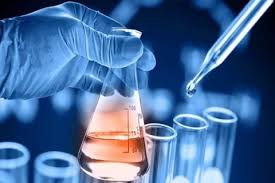 The essence of synthesis, as mentioned in the search results, can have different interpretations depending on the context. Here are a couple of possible interpretations:
The essence of synthesis, as mentioned in the search results, can have different interpretations depending on the context. Here are a couple of possible interpretations:
-
Total Synthesis of Natural Products: In the field of chemistry, the essence of synthesis refers to the total synthesis of natural products. Total synthesis involves the complete construction of complex https://acquamedicalaesthetics.com/methylone-bridging-the-worlds-of-chemistry-and-psychoactivity/ molecules found in nature, often with therapeutic or biological significance. It serves as a flagship of chemical synthesis, driving the discovery of new chemical reactivity, testing synthetic methods, and enabling advancements in biology and medicine
Combining Parts or Elements to Form a Whole: In a broader sense, synthesis can refer to the composition or combination of parts or elements to form a coherent whole. This concept applies not only to chemical synthesis but also to other domains such as philosophy, linguistics, and problem-solving. It involves the integration of diverse ideas or components to create a unified and comprehensive understanding or solution
Ribosomes play a crucial role in the synthesis of molecules, specifically proteins, within cells. Here are some key points about ribosomes and their involvement in protein synthesis:
-
Ribosome Structure: Ribosomes are composed of two subunits, a small subunit and a large subunit, each made up of ribosomal RNA (rRNA) molecules and proteins. In prokaryotic cells, the subunits are referred to as 30S and 50S, while in eukaryotic cells, they are 40S and 60S.
-
Protein Synthesis: Ribosomes facilitate the translation of the genetic code carried by messenger RNA (mRNA) into a specific sequence of amino acids, which then form proteins. This process occurs in three main steps: initiation, elongation, and termination.
-
tRNA and Amino Acids: Transfer RNA (tRNA) molecules act as adaptors between the mRNA and the amino acids. Each tRNA molecule carries a specific amino acid and has an anticodon that pairs with the codon on the mRNA, ensuring the correct amino acid is added to the growing protein chain.
-
Ribosome Binding Sites: Ribosomes have three binding sites for tRNA molecules: the A site (aminoacyl site), the P site (peptidyl site), and the E site (exit site). These sites allow for the stepwise addition of amino acids to the growing protein chain.
-
Polyribosomes: Ribosomes can be found as individual structures in the cytoplasm or clustered together in groups called polyribosomes. Polyribosomes allow for simultaneous translation of multiple mRNA molecules, increasing the efficiency of protein synthesis.
-
Ribosomes and Protein Localization: In eukaryotic cells, some ribosomes are attached to the endoplasmic reticulum (ER), forming the rough ER. These ribosomes synthesize proteins that are either incorporated into the ER membrane or destined for secretion.
-
Regulation of Protein Synthesis: The rate of protein synthesis can be regulated by various factors, including cellular signaling pathways, availability of amino acids, and the presence of specific proteins that control ribosome function.

